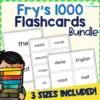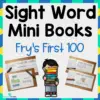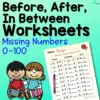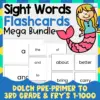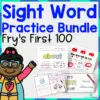Helping young children to identify, understand, express, and manage their feelings and emotions is one of the first important steps in building their social-emotional skills. With this, they’ll be able to manage relationships and solve their problems more effectively.
On top of these, it also has long-term benefits for their mental health and well-being. Luckily, our list includes some of the best feelings charts for your preschoolers to help you achieve this.
Great Feelings Chart for Preschoolers
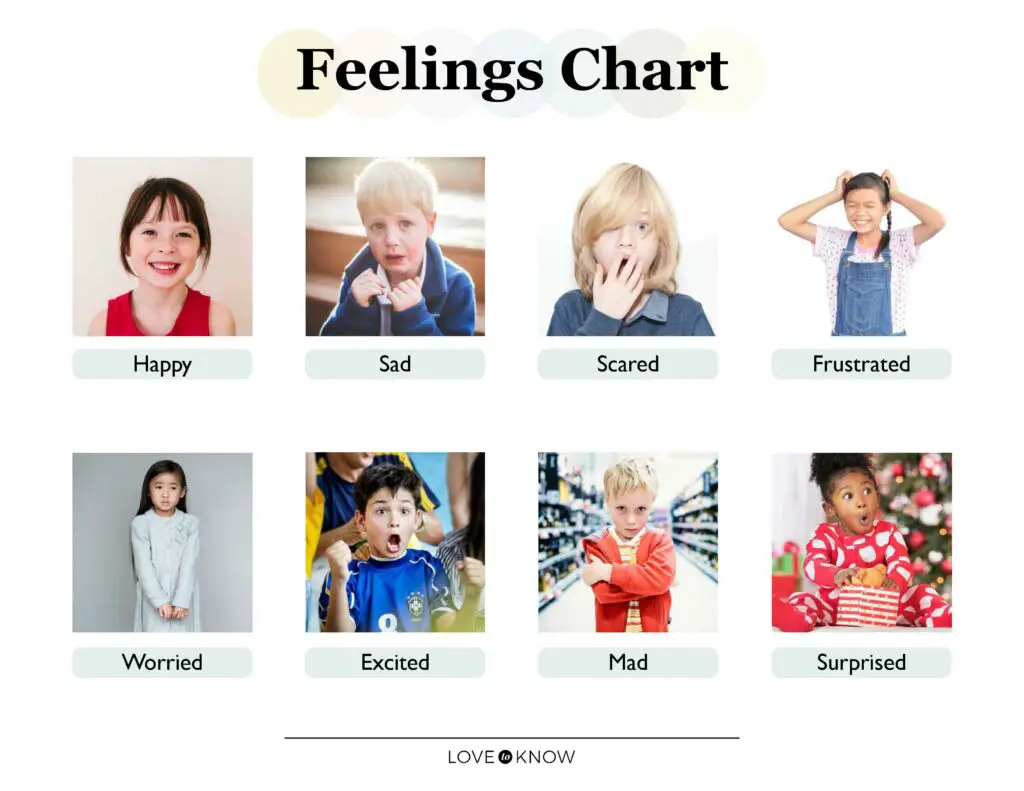
It can be challenging for kids, especially the younger ones, to express themselves. One of the main reasons for this is their lack of emotional vocabulary to express how they actually feel. In that case, the real children’s emotions chart is a great start in helping your preschoolers understand their emotions and work them out.
You can use this chart in a variety of ways. For instance, you can add it to their sensory box or bag. You can also display the chart in your classroom in an accessible area. This way, the children can use the charts to express and differentiate their emotions.
Another great idea is creating a bingo board on the emotions chart and having the kids choose the appropriate emotion that matches their facial expressions from the chart. The ways you can use the emotions chart are practically endless!
For more information about this chart, you may go and visit kids.lovetoknow.com.
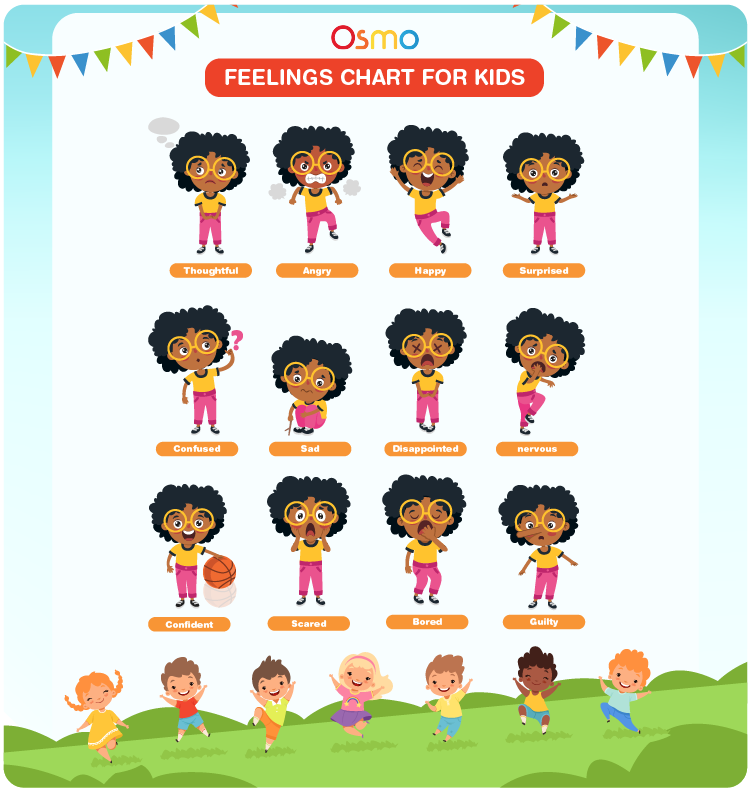
Since young kids still have limited vocabulary, most of them learn better with images they can associate new knowledge with. Presenting them with this full-body character feelings chart is definitely a huge step towards a deeper understanding of themselves and how they feel.
You can use the feelings chart daily or weekly. Provide a copy for each child and let them identify and label their emotions every day or every week. Make sure the charts are always readily accessible to the kids and guide them in identifying their feelings, too. Also, keep in mind to focus more on positive feelings rather than negative ones.
Through exposing them to various examples of feelings, your preschoolers will surely improve their way of expressing their own. Feel free to visit playosmo.com to learn more about the full-body character feelings chart.
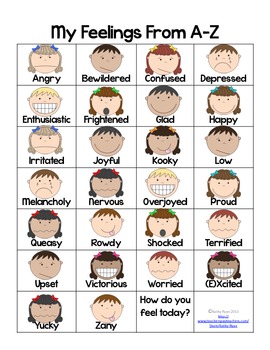
If you are looking to unlock strong vocabulary for your preschoolers to describe their feelings, then this A-Z feelings chart is perfect for you. It includes various words starting from the letter A to Z that can help them discuss how they feel. Each word also has a picture to help them understand it better.
You can laminate the chart to make it last longer and then hang it on your classroom walls. You can even display it in your writing corners, or use it as individual word walls in your preschoolers’ folders. Keeping it always in sight of the kids will surely help in making them more and more comfortable using the chart daily.
Don’t miss out on more activities like this and check out teacherspayteachers.com to learn more.
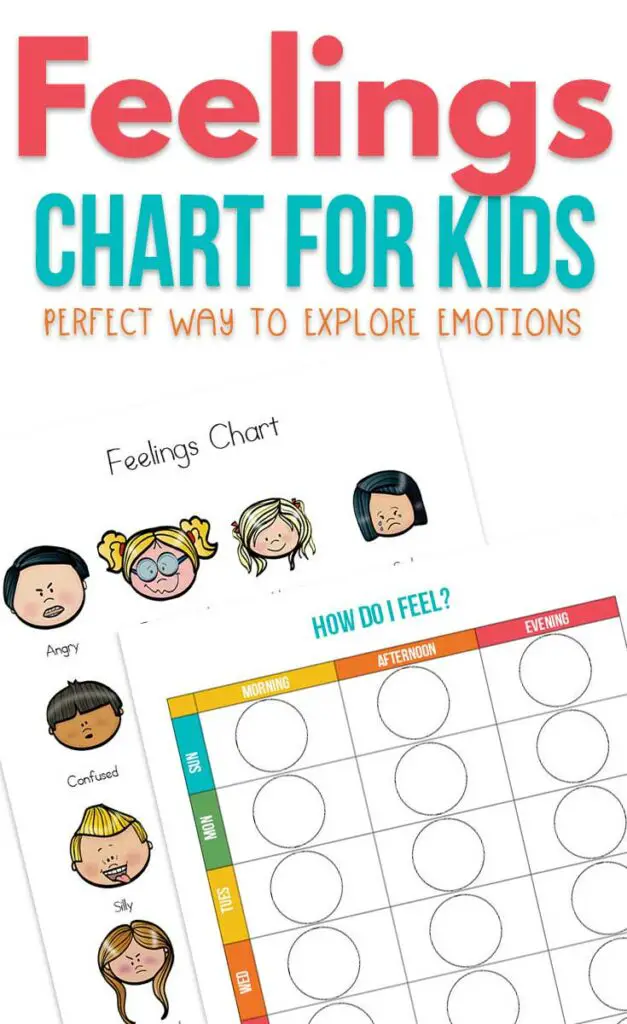
Sometimes, our kids get overwhelmed with big emotions that they do not know how to express in a healthy way. This can be frustrating for them, as they can feel that they aren’t being heard or understood.
That being said, using a feelings chart to track how they feel every day can greatly help them in recognizing, naming, understanding, and expressing their feelings.
The daily emotions tracker involves filling out a “How I Feel” chart every day. It has a space for your preschoolers to name their emotions and how they felt all throughout the day — from morning to afternoon until evening. This way, they are able to track their emotions and how they react to daily situations.
Being aware of their feelings positively impacts their emotional and mental health. Hence, they will be able to express their feelings and healthily deal with them. Discover more about the daily emotion tracker and a whole lot more at livinglifeandlearning.com.
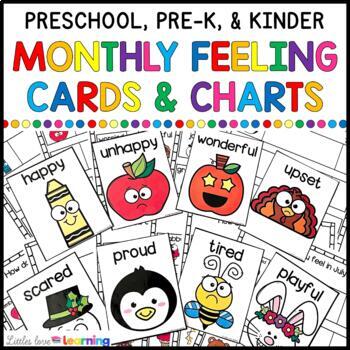
The monthly feeling cards and tally charts are your best buddy when it comes to teaching your preschoolers how to recognize and express their feelings and emotions.
On top of its excellent contribution to developing the kids’ social-emotional skills, it also helps widen their oral vocabulary. Plus, there’s also a bit of math practice involved in the tallying part.
You will be using one tally chart along with one set of four feeling cards for each month of the year. The children would choose the corresponding feeling card(s) daily, according to how they feel that day. They would then take their tally chart and add a tally mark for their feeling(s) that day.
At the end of each month, they’ll count the total tally mark for each feeling and determine which feeling they had the most and least for that month. Cool activity, isn’t it? Learn more about it at teacherspayteachers.com.
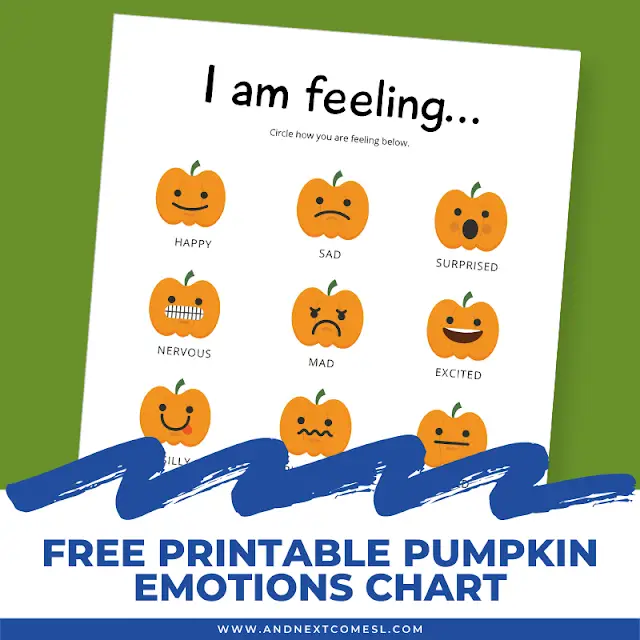
This pumpkin emotions chart is the perfect feeling chart to use during the fall months! It features various pumpkin faces with different expressions. It is a truly brilliant way to discuss different emotions that your preschoolers might be feeling.
Your preschoolers can either point out the pumpkin face that represents how they feel or draw a circle around it. They also have the option to draw and name their own emotion on a blank pumpkin canvas. Definitely giving that Halloween vibe, right?
If you choose to do the latter, then you’ll definitely benefit from laminating the printed chart and using dry-erase markers for drawing. This way, you can reuse the charts as much as possible. Isn’t that pretty awesome?
If this sounds like something you would love to do with your kids, then make sure to check out andnextcomesl.com for more information.
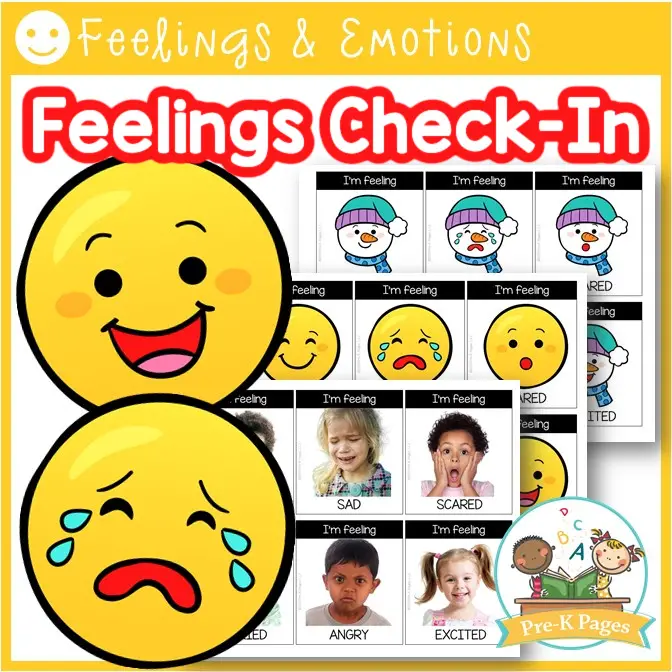
Thinking of an interactive and fun way to teach your preschoolers how to express their feelings? The feelings check-in cards and charts are definitely a must-try! This will help your little ones hone their emotional intelligence by practicing how to identify their emotions along with other kids’ emotions for the whole year.
On top of social-emotional skills, it also involves reading and unlocking new vocabulary that will definitely help them express their emotions better. There are a variety of ways to use them, too. This means you can choose a method that suits your class better. No matter which you choose, the kids will absolutely have fun while learning to understand themselves and their peers.
Curious about how you are going to use the feelings check-in cards and charts for your next class? Feel free to check out pre-kpages.com for some brilliant ideas!
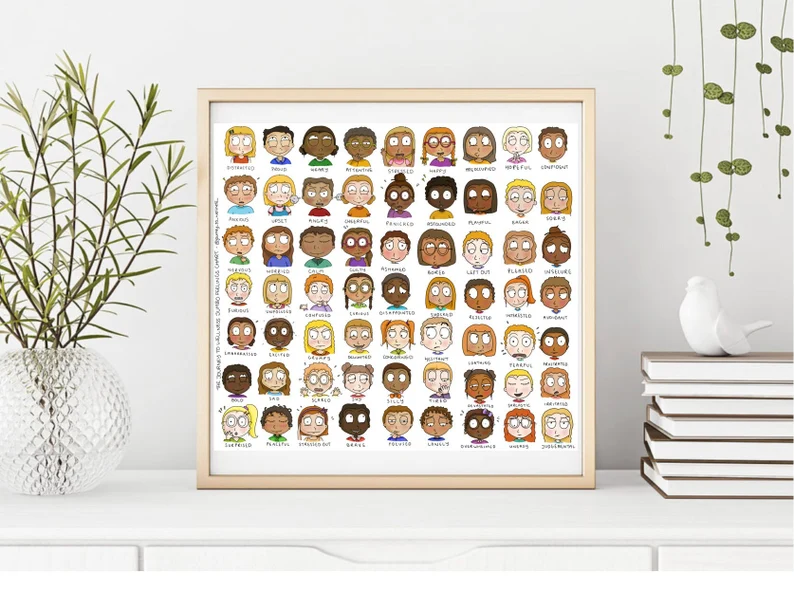
The jumbo feelings chart is a great way to keep your preschoolers exposed to and familiar with different kinds of expressions or emotions. It is great as your first stepping stone toward the children’s self-awareness, especially when it comes to their own feelings and emotions.
Using the chart is nothing complicated. All you need to do is print the template out and then plaster it on your wall. This way, it’s always within the kids’ view. You can even allot a short period of time each day to go through each emotion on the chart. Throughout the day, the kids are free to use them to point out how they currently feel.
Want to grab yourself a copy of the jumbo feelings chart template? Don’t miss out, add it to your etsy.com cart now!
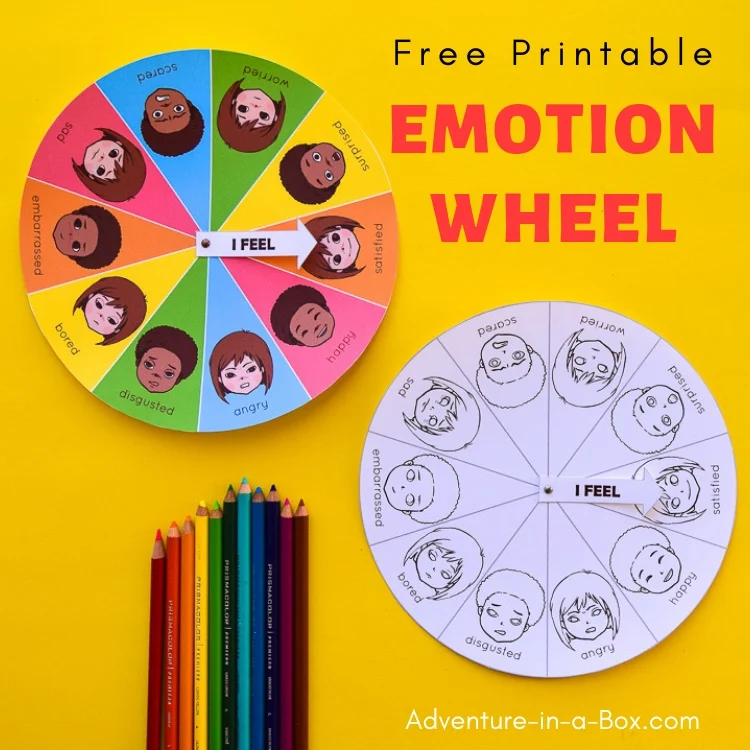
Want to spice things up to keep the kids engaged in learning about feelings and emotions? This emotion wheel is exactly what you need! Talking to preschoolers about their feelings and emotions can be a bit challenging, but adding a sprinkle of fun and excitement works wonders.
It’s a printable template and you can even opt for the black-and-white version that the kids can color if you want that extra touch of personalization. To use it, simply let your young ones spin the arrow and see where it lands. Then, ask them to tell you about the time they felt this emotion.
It’s truly an excellent way to help them open up and express themselves verbally.
You can download the template and learn more about the emotion wheel at adventure-in-a-box.com.
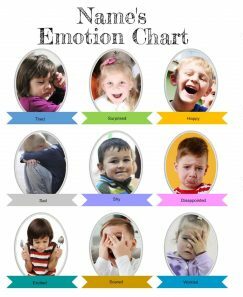
This emotion chart takes personalization to a whole new level! You can choose your own title for the chart, which emotions to include, and even the images you want to match for each emotion. This means you can actually tailor the chart specifically for each child. Absolutely amazing, isn’t it?
The purpose is still the same as the previous charts, but this definitely does add a lot of fun and excitement to it. You can use their favorite character as a reference, or even their favorite artist! It is also a great way to keep widening their vocabulary since you can add unique emotions that they probably haven’t heard of yet.
Your preschoolers will surely thank you for this chart! So what are you waiting for? Check out rewardcharts4kids.com and customize your very own emotion chart.
Conclusion
These feeling charts we’ve listed are all suited for your preschoolers and will surely help them learn to recognize, name, and express their own feelings and emotions.
Hopefully, you found a piece or two to use in your next class. Whichever you choose, what’s important is to make the young ones comfortable in expressing themselves. Good luck!
People Also Ask
Before we fully end today’s article, we want to ensure that you won’t have too many lingering questions in your head. Since you’ve probably already chosen the charts you want to use with your little ones, let’s talk further about how you should be using them, shall we?
There are endless ways to use a feelings chart for kids. However, in general, it is important to explain to your children the importance of recognizing and naming different emotions.
Make sure you also tell the kids that the key isn’t the quantity of feelings expressed or pointed out in the charts, but rather, how they associate their own feelings with words.
Other activities and resources you might find helpful:


